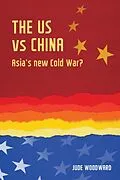This book addresses the most important question in geopolitics today - the future of relations between the US and China. Concerned that the rise of China will challenge the its hegemony in world affairs, the US has decided to reassert its influence in Asia to counteract any challenge. Examining and challenging the dominant causal explanations for and professed intentions of this shift in US policy, this book uncovers the real dynamics of contemporary Sino-American relations, surveying their complex interactions in the context of their post-war history, offering the reader an accessible and informative survey of the relations between China and the US in Asia, ranging from Russia's turn to the east, the rise of Japanese nationalism, democracy in Myanmar, North Korea's nuclear programme to disputes in the South China Sea. This book is an illuminating introduction to the defining issue shaping global politics for our time.
Autorentext
Jude Woodward is a writer and lecturer on China. Until 2012 she was a Visiting Professor in the Antai School of Business, Shanghai Jiao Tong University and she continues to visit and lecture in China regularly.
Klappentext
This book addresses the most important question in geopolitics today: the future of relations between the US and China. In 2010 the US announced a historic shift in foreign policy the 'pivot to Asia' turning its strategic orientation from the Atlantic to the Pacific. Concerned that the economic rise of China would prompt a challenge to its position in world affairs, the US declared it was 'both a Pacific and an Atlantic power' and moved to reassert its influence in Asia. This book does not portray China one-sidedly, but nonetheless challenges the dominant causal explanations for and professed intentions of this shift in policy to Asia. It argues that, rather than countering a 'regional aggressor' or a dangerous 'revisionist power', the US is creating instability through an intervention to hold back China that has echoes of the Cold War.
Inhalt
1 Introduction: America's Pacific century?Part I: Is US-China conflict inevitable?2 China: a doomed and distorted growth model?3 Can China rise peacefully?4 America's exceptional empire Part II: Containment without Russia?5 Russia: facing west or eastPart III: Containment from the east6 The rise of Japanese nationalism7 The USS Taiwan?8 Korea: divided nation, divided allegiancesPart IV: Containment from the southern seas9 Asia's Mediterranean10 Turbulent seas11 The courting of Vietnam12 Thailand and Myanmar: shifting loyalties Part V: Containment from south and west13 Winning over India14 Tibet and the Sino-Indian borders15 Losing Central Asia 16 Conclusion: the sword or the spirit?Select bibliographyIndex
